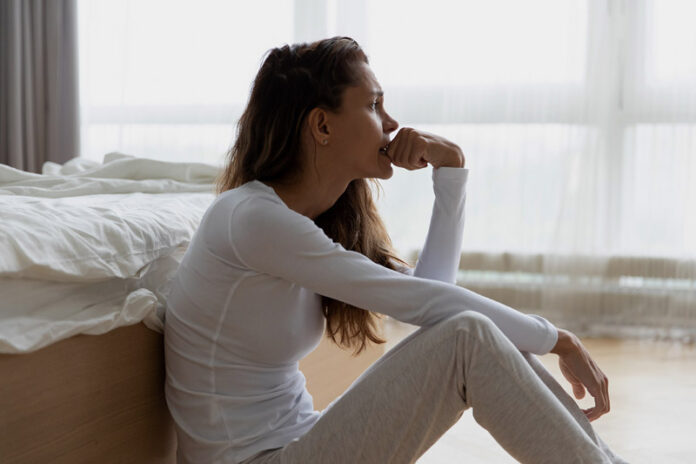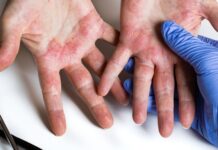Yeast infections are a common condition that can affect both men and women. They are caused by a fungus known as Candida and can occur in various parts of the body. Yeast infections can be uncomfortable and even painful, but they are usually not serious and can be treated with medication. One of the most common questions people have about yeast infections is How Long Does a Yeast Infection Last.
The duration of a yeast infection can vary depending on the severity of the disease and the treatment used. Mild yeast infections may clear up on their own in a few days, while more severe infections can take up to two weeks to go away. It is essential to seek treatment for yeast infections to prevent them from becoming worse and spreading to other parts of the body.
Key Takeaways
- A fungus causes yeast infections and can occur in various parts of the body.
- The duration of a yeast infection can vary depending on the severity of the infection and the treatment used.
- Seeking treatment for yeast infections is essential to prevent them from becoming worse and spreading to other parts of the body.
What is Yeast Infections?
Yeast infections, also known as candidiasis, are caused by the overgrowth of a type of fungus called Candida. Candida is a natural part of the human body’s microbiome, which includes bacteria and fungi that live in and on the body. However, when there is an overgrowth of Candida, it can lead to an infection.
Yeast infections can occur in various parts of the body, including the mouth, skin, and genitals. Vaginal yeast infections, also known as vulvovaginal candidiasis, are one of the most common types of yeast infections in women. They occur when there is an overgrowth of Candida in the vulva, causing symptoms such as itching, burning, and discharge.
Candida albicans is the most common type of Candida that causes yeast infections. However, other types of Candida can also cause infections. In addition to vaginal yeast infections, different types of yeast infections include oral thrush, which affects the mouth and throat, and skin yeast infections, which can occur in various parts of the body.
Factors that can increase the risk of developing a yeast infection include taking antibiotics, having a weakened immune system, and having uncontrolled diabetes. Women who are pregnant or taking birth control pills may also be at a higher risk of developing a yeast infection.
Treatment for yeast infections typically involves antifungal medications, which can be taken orally or applied topically. The length of treatment can vary depending on the severity of the disease and the type of medication used. In general, mild yeast infections may clear up in a few days, while more severe infections may take up to two weeks to clear.
How Long Does a Yeast Infection Last?
A yeast infection is a common fungal infection that can affect various parts of the body, including the genitals, skin folds, mouth, and throat. But do you know How Long Does a Yeast Infection Last? The duration of a yeast infection can vary depending on the severity of the infection and the treatment used.
Mild yeast infections may clear up on their own within a few days without any treatment. However, moderate to severe infections may take up to one to two weeks to clear up. Over-the-counter antifungal creams or prescription medicine can be used to treat moderate to severe infections.
It is important to note that even after the symptoms of yeast infection have disappeared, it is recommended to continue the treatment for the full course of medication to prevent the infection from recurring.
Factors such as a weakened immune system, uncontrolled diabetes, and pregnancy can increase the risk of developing a yeast infection and may also affect the duration of the infection. It is important to consult a healthcare provider if symptoms persist or worsen despite treatment.
In summary, the duration of a yeast infection can vary from a few days to a few weeks, depending on the severity of the infection and the treatment used. It is important to complete the full course of medication even after symptoms have disappeared to prevent the infection from recurring.
Symptoms of Yeast Infections
Yeast infections are a common condition that can affect both men and women. They are caused by an overgrowth of the fungus Candida, which can lead to a variety of symptoms. In this section, we will discuss the symptoms of yeast infections, including mild and moderate to severe symptoms.
Mild Symptoms
Mild yeast infection symptoms may include:
- Itching and irritation in the vulva or penis
- A burning sensation during urination or sex
- Redness and swelling of the genital area
- Discomfort or pain during sex
- White discharge that may resemble cottage cheese
These symptoms may be uncomfortable but are typically not severe. In some cases, mild yeast infections may clear up on their own without treatment.
Moderate to Severe Symptoms
Moderate to severe yeast infection symptoms may include:
- Severe itching and irritation in the vulva or penis
- Pain or discomfort during sex or urination
- Redness, swelling, and cracking of the genital area
- Sores or blisters on the genital area
- A thick, white discharge that may have a strong odor
These symptoms can be more severe and may require medical treatment. In some cases, untreated yeast infections can lead to complications such as recurrent infections or the spread of the infection to other parts of the body.
It is important to note that only some people with a yeast infection will experience all of these symptoms. Some people may only experience mild symptoms, while others may have more severe symptoms. If you suspect that you have a yeast infection, it is important to see a healthcare provider for an accurate diagnosis and appropriate treatment.
Causes of Yeast Infections
Yeast infections are caused by an overgrowth of fungi called Candida. Candida is normally present in small amounts in the vulva, but when the balance of bacteria and yeast in the vulva is disrupted, Candida can grow and cause an infection.
Several factors can disrupt the balance of bacteria and yeast in the vulva, leading to a yeast infection. These factors include:
- Antibiotics: Antibiotics can kill the bacteria that normally keep yeast in check, allowing Candida to grow and cause an infection.
- Diabetes: High blood sugar levels can increase the amount of sugar in vaginal secretions, providing a food source for Candida to grow.
- Pregnancy: Hormonal changes during pregnancy can alter the vaginal environment and increase the risk of yeast infections.
- Birth control pills: Some birth control pills can disrupt the balance of bacteria and yeast in the vulva, increasing the risk of yeast infections.
- Weak immune system: A weakened immune system can make it harder for the body to fight off infections, including yeast infections.
- Douching: Douching can disrupt the balance of bacteria and yeast in the vulva, increasing the risk of yeast infections.
- Vaginitis: Vaginitis, an inflammation of the vulva, can disrupt the balance of bacteria and yeast in the vulva, increasing the risk of yeast infections.
- HIV: Women with HIV are more susceptible to yeast infections due to their weakened immune systems.
- Endometriosis: Endometriosis can disrupt the vaginal environment and increase the risk of yeast infections.
It is important to note that while yeast infections can be uncomfortable, they are not considered a sexually transmitted infection (STI). However, sexual activity can sometimes lead to the spread of yeast infections.
Diagnosing Yeast Infections
When someone suspects they may have a yeast infection, the first step is to see a doctor. The doctor will ask questions about the individual’s medical history, including any past vaginal infections or sexually transmitted infections. They will also perform a pelvic exam to examine the external genitals for signs of infection.
One of the standard tests for a yeast infection is a microscopic examination of a vaginal smear sample. Yeast is often visually detectable in such instances. The doctor can take the vaginal smear, and self-mears have been shown to be similarly effective for diagnosing yeast infections.
In some cases, the doctor may also order a culture test to confirm the diagnosis. During a culture test, a sample of discharge is taken and sent to a lab, where it is grown in a culture to identify the type of organism causing the infection.
It’s important to note that not all vaginal infections are caused by yeast, and misdiagnosis can lead to ineffective treatment. Other common causes of vaginal infections include bacterial vaginosis and sexually transmitted infections, so it’s essential to get an accurate diagnosis from a healthcare professional.
In summary, diagnosing a yeast infection involves a medical history and pelvic exam, along with laboratory tests such as a microscopic examination of a vaginal smear sample or a culture test. It’s important to see a doctor for an accurate diagnosis to ensure proper treatment.
Treatment Options for Yeast Infections
When it comes to treating yeast infections, there are several options available. The treatment plan depends on the severity of the infection and the patient’s medical history. Here are some of the most common treatment options for yeast infections:
Over-the-Counter Treatments
Mild yeast infections can be treated with over-the-counter antifungal medications. These medications are available as creams, ointments, tablets, and suppositories. Some of the most popular over-the-counter antifungal medications include miconazole (Monistat 3) and clotrimazole.
Over-the-counter treatments are usually short-course vaginal therapy, which means they are taken for three to seven days. These treatments are effective for most women and can relieve symptoms like itching, burning, and discharge.
Prescription Treatments
If the infection is severe or recurring, the doctor may prescribe an oral or multidose oral medication. Fluconazole is a popular oral medication that is taken once a week for up to six weeks. It is highly effective in treating yeast infections, but it can cause side effects like nausea, headache, and abdominal pain.
The doctor may also prescribe antifungal creams or ointments for external use. These prescription treatments are usually more potent than over-the-counter treatments and can provide relief from symptoms like itching and burning.
Home Remedies
In addition to medication, several home remedies can help relieve the symptoms of a yeast infection. One of the most popular home remedies is yogurt. Yogurt contains lactobacillus acidophilus, which is a natural bacteria that can help restore the balance of bacteria in the vagina.
Another home remedy is boric acid. Boric acid is a natural antifungal agent that can be used to treat yeast infections. However, it is important to use boric acid with caution, as it can be toxic if ingested.
Overall, there are several treatment options available for yeast infections. Over-the-counter treatments are effective for most women, while prescription treatments are reserved for severe or recurring infections. Home remedies can also provide relief from symptoms, but they should be used with caution and under the guidance of a healthcare provider.
Preventing Yeast Infections
Yeast infections are common and can be prevented with a few simple steps. Here are some ways to reduce the risk of getting a yeast infection:
Practice Good Hygiene
Good hygiene is essential in preventing yeast infections. Make sure to keep the genital area clean and dry. After using the bathroom, wipe from front to back to avoid spreading bacteria from the anus to the vagina. Avoid using scented products, such as soaps and sprays, which can irritate the vulva and increase the risk of infection.
Wear Cotton Underwear
Cotton underwear is breathable and can help prevent moisture buildup, which can lead to yeast infections. Avoid wearing tight-fitting pants or underwear, as these can trap moisture and create a breeding ground for yeast.
Take Probiotics
Probiotics are beneficial bacteria that can help prevent yeast infections. They can be found in foods such as yogurt, kefir, and sauerkraut or taken as supplements. Probiotics can help restore the natural balance of bacteria in the body and reduce the risk of infection.
Maintain Overall Health
Maintaining overall health can also help prevent yeast infections. Eating a healthy diet, getting enough sleep, and managing stress can all help boost the immune system and reduce the risk of infection. It is also important to avoid douching, as this can disrupt the natural balance of bacteria in the vulva and increase the risk of infection.
By following these simple steps, individuals can reduce the risk of getting a yeast infection and maintain good vaginal health. If symptoms of a yeast infection do occur, it is important to seek medical treatment to prevent the infection from becoming worse.
Special Considerations
Yeast Infections in Pregnancy
Pregnant women are more susceptible to yeast infections due to hormonal changes in their bodies. Yeast infections during pregnancy can also be more severe and difficult to treat. Pregnant women need to seek medical attention if they suspect they have a yeast infection. Treatment options may differ for non-pregnant individuals, and self-treatment may not be recommended.
Recurrent Yeast Infections
Recurrent yeast infections can be a frustrating and uncomfortable experience. Individuals who experience recurrent yeast infections should seek medical attention to identify any underlying causes or risk factors. Treatment options may include longer courses of antifungal medication or preventative measures such as probiotics.
Yeast Infections in Men
While yeast infections are more commonly associated with women, men can also develop yeast infections. Symptoms in men may include itching, burning, and redness on the penis. Treatment options for yeast infections in men may include antifungal medication or topical creams.
It is important to note that while some home remedies, such as tea tree oil, may be touted as a treatment for yeast infections, there is limited evidence to support their effectiveness. It is always recommended to consult with a healthcare provider before attempting any home remedies.
Overall, recovery time for yeast infections can vary depending on the severity of the infection and the individual’s response to treatment. Mild infections may clear up in as little as three days, while moderate to severe infections may take one to two weeks to clear. It is important to seek medical attention if symptoms persist or worsen, as they may be indicative of a more serious condition such as bacterial vaginosis or oral thrush.
Conclusion
In conclusion about How Long Does a Yeast Infection Last, the duration of a yeast infection is dependent on the severity of the infection and the treatment used. Mild yeast infections may clear up in as few as three days without treatment, while more severe infections can take one to two weeks to clear.
Over-the-counter treatments like antifungal creams can be effective for moderate to severe infections, and prescription medications may be necessary in some cases. Home remedies like yogurt, garlic, and tea tree oil may provide relief for mild infections, but it’s important to consult a healthcare provider before trying any alternative treatments.
It’s important to note that while yeast infections are common, they can also be a sign of an underlying health condition. Women who experience recurrent yeast infections should speak with their healthcare provider to rule out any underlying health issues.
Overall, with proper treatment, most yeast infections can be effectively treated and cleared within a few days to a week. It’s important to follow the recommended treatment plan and practice good hygiene to prevent future infections.
Frequently Asked Questions
How long does it take for a yeast infection to go away with fluconazole?
Fluconazole is an antifungal medication that is often used to treat yeast infections. It typically takes about 1-3 days for fluconazole to clear up a yeast infection. However, the length of treatment may vary depending on the severity of the infection.
How long does it take for a yeast infection to go away after taking the pill?
The length of time it takes for a yeast infection to go away after taking a pill can vary. It typically takes about 3-7 days for the infection to clear up after taking a pill. However, the length of treatment may vary depending on the severity of the infection.
How long should a yeast infection last untreated?
If left untreated, a yeast infection can last for several weeks or more. The symptoms may also become more severe over time. It is important to seek treatment as soon as possible to avoid complications.
What is the fastest way to get rid of a yeast infection?
There are several ways to treat a yeast infection, including over-the-counter medications, prescription medications, and home remedies. The fastest way to get rid of a yeast infection may depend on the severity of the infection and the individual’s response to treatment.
How do I know if my yeast infection is going away?
As the yeast infection begins to clear up, the symptoms will typically improve. These may include itching, burning, and discharge. It is important to continue treatment until the infection is completely gone to avoid a recurrence.
What does a yeast infection look like?
A yeast infection may cause redness, itching, and irritation in the affected area. It may also cause a thick, white discharge that resembles cottage cheese. However, not all yeast infections cause visible symptoms, so it is important to seek medical attention if you suspect you may have an infection.
Also Read:
How to Cure Fungal Infection on Skin Naturally
Symptoms of Urinary Tract Infections in Men
How Long Does It Take For Cephalexin To Work On Skin Infection
Sources:
https://www.medicalnewstoday.com/articles/322722
https://www.healthline.com/health/womens-health/how-long-does-yeast-infection-last
https://my.clevelandclinic.org/health/diseases/5019-vaginal-yeast-infection
https://www.mayoclinic.org/diseases-conditions/yeast-infection/diagnosis-treatment/drc-20379004





















